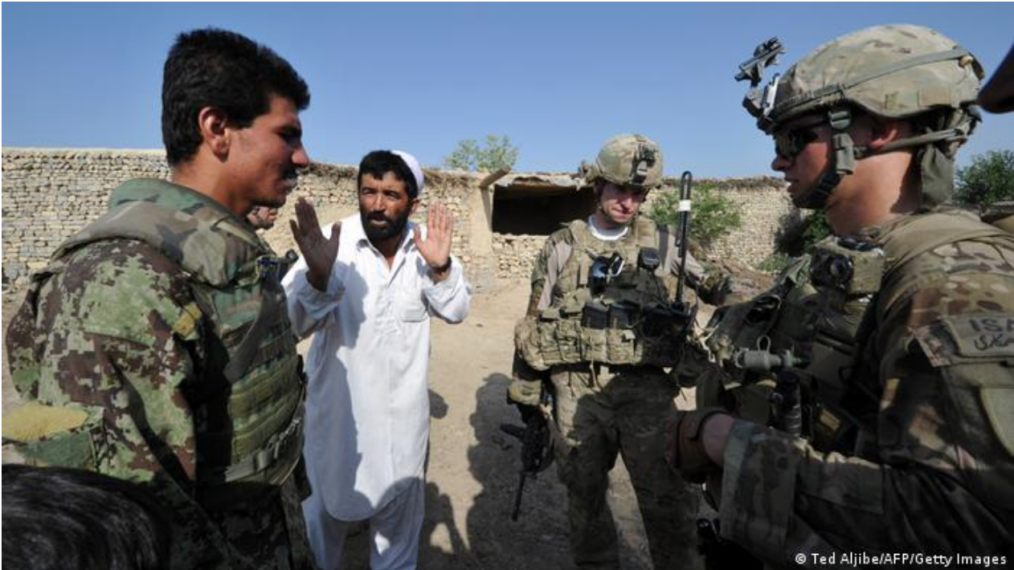Over the last weekend, the Taliban continued its country-wide offensive, successfully capturing several Afghan provincial capitals. While the U.S. continues to pin its hopes on a Taliban-Afghan government peace deal to halt the country’s relentless violence, the reality on the ground tells a different story. The Taliban’s offensive casts serious doubt on its supposed desire to reach a peaceful resolution. The U.N. special envoy for Afghanistan, Deborah Lyons, has questioned the Taliban’s commitment to a political settlement.
The statements of the Taliban’s Doha-based political office regarding their willingness to negotiate are no more than smoke and mirrors, maintaining a glimpse of hope for the West for a peaceful resolution while at the same time continuing the offensive. It represents a conceptual failure of the West in understanding the organizational nature of the Taliban. The Taliban, with all of its branches, is a terrorist organization, or more precisely, a hybrid terrorist organization.
Definitions
Terrorism is the deliberate use of, or threat to use, violence against civilians or against civilian targets, in order to attain political ends. The terrorist has political goals, whether nationalistic, separatist, socioeconomic, or religious. The Taliban’s end goal, for example, is to establish an Islamic caliphate in Afghanistan. Terrorism is differentiated from criminal violence by its deliberate use of violence against civilians for political ends.
A hybrid terrorist organization is one that stands on multiple legs. First, it has a military or paramilitary leg that engages in terrorist acts. Second, it has a political leg that allows the organization to operate and win in both the “illegitimate” arena of terrorism and the “legitimate” arena of the media. Third, it acts as an alternative provider of welfare services through seemingly innocent organizations serving a potential or actual constituency. Among jihadist organizations such as the Taliban, this activity is known as da’wa and subsumes a combination of religious services, educational services, ideological indoctrination, and welfare services.
The Taliban as a Hybrid Terrorist Organization
The Taliban’s operations today are divided between its three legs: military, political, and social welfare-da’wa.
Its military forces are advancing on all fronts, seizing provincial capitals, and increasingly utilizing terror tactics against civilians and governmental installations. In recent weeks, the Taliban kidnapped and executed a popular Kandahari comedian Nazar Mohammad, apparently because he ridiculed Taliban leaders. The Taliban tried to assassinate the acting defense minister Bismillah Khan Mohammadi in a bombing attack, leaving dozens dead but failing to kill the minister. The Taliban shot and killed the director of Afghanistan’s government media center, Dawa Khan Menapal, after ambushing him in Kabul. In its overall strategy, the Taliban has been conducting summary executions, beating up women, shutting down schools, and blowing up clinics and infrastructure.
Its political office presents a different face. From its seat in Doha, Qatar, the Taliban’s political office maintains its commitment to negotiation and a peaceful resolution of the conflict. The Taliban has dispatched delegations to Russia, China, and Iran in hopes of gaining international legitimacy. Finally, the Taliban has also emphasized its willingness to grant rights to women.
As part of its da’wa efforts, the Taliban has created a network of Islamic religious schools, called madrasas, all across the country. These schools attract many poor families because the Taliban cover all expenses and provide food and clothing for the children. On some occasions, the Taliban has encouraged families to send their children to their schools by offering families cash. These schools are used as recruitment and training sites for the Taliban.
Conclusions
Despite what it may say, the Taliban has not changed and holds the same views as it did before. The only difference is that it has become more sophisticated in its use of technology and is better integrated within the jihadi universe. In order to successfully confront the Taliban, the world must first conceptually understand the nature of the organization. Second, it must designate all of the Taliban’s operational legs as part of the same hybrid terrorist organization. Finally, this designation will enable the world to use counterterrorist strategies to better confront all of the Taliban’s legs.




